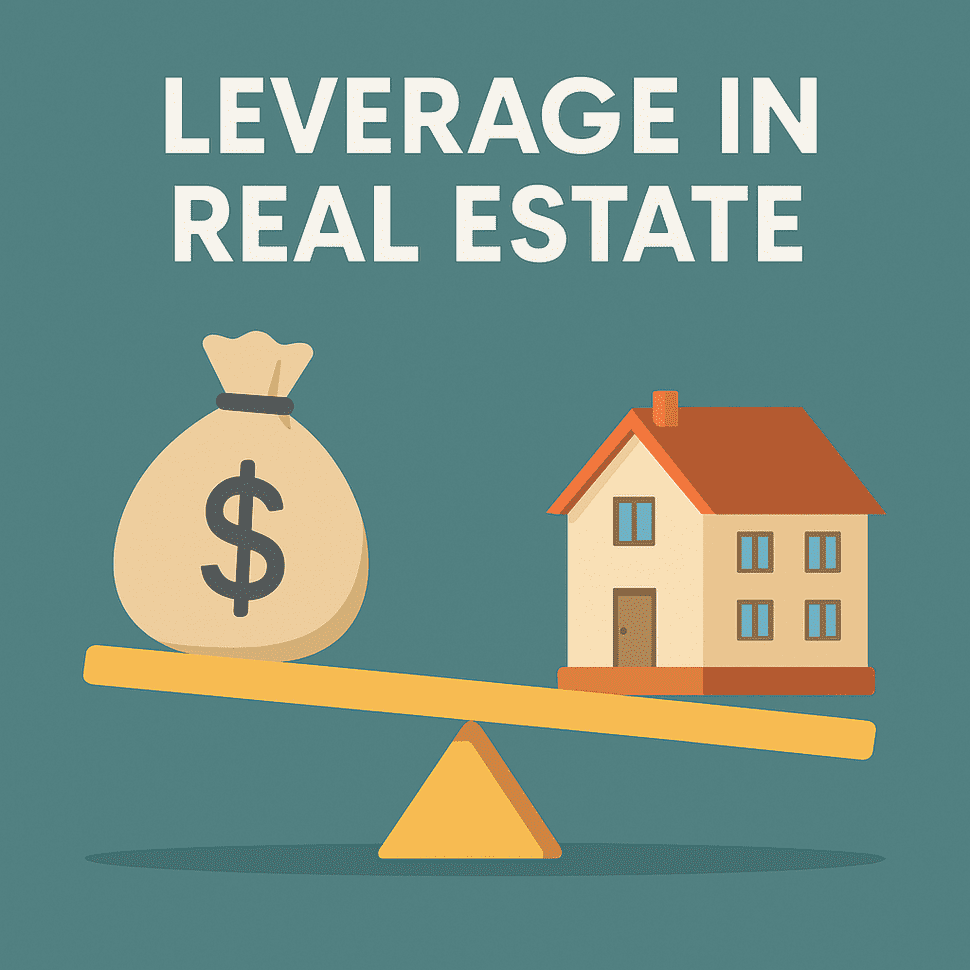Land, Leases, and Leverage: The Investor's Guide

In the complex ecosystem of real estate, three powerful forces stand out as the pillars of a successful investment strategy: land, leases, and leverage. While many newcomers focus solely on a property's immediate appearance, seasoned investors know that true wealth is built by mastering these fundamental concepts. This comprehensive guide will demystify these three pillars, showing you how to use them as a roadmap to generate significant returns and build a lasting real estate portfolio.
The Foundation: Land as a Finite Asset
The famous quote by Mark Twain, "Buy land, they're not making it anymore," is more relevant today than ever. Land is the single most valuable component of any real estate deal. Unlike buildings, which depreciate over time, land is a finite asset that typically appreciates in value. Understanding its role is the first step to unlocking significant returns.
- Location, Location, Location: This timeless mantra is a direct reference to the land itself. A well-located plot is a hedge against economic downturns and a magnet for future development. Think about areas with strong job growth, expanding infrastructure, or a scarcity of available space. Land in these areas is primed for appreciation.
- Zoning and Development: The value of a piece of land is determined not only by its location but also by what can be built on it. A parcel zoned for commercial use or high-density residential buildings is far more valuable than one restricted to a single-family home. Understanding local zoning laws is crucial for identifying undervalued land and maximizing its potential.
- The Power of Vacant Land: While it may seem counterintuitive, investing in vacant land can be a high-reward strategy. It requires little to no maintenance, no tenants to manage, and minimal holding costs. Your ROI comes from holding the land as it appreciates or from selling it to a developer who needs it for a new project.
The Engine: Leases as a Cash Flow Machine
Leases are the engine of your real estate investment. They are the legal agreements that turn a static property into a dynamic, income-generating asset. Mastering the art of the lease is key to ensuring consistent cash flow and a healthy return on investment.
- Positive Cash Flow is King: A well-structured lease ensures that your monthly rental income exceeds all of your expenses (mortgage, taxes, insurance, maintenance). This positive cash flow is the lifeblood of your investment, allowing you to pay down your loan, build an emergency fund, and eventually acquire more properties.
- Tenant Screening is Non-Negotiable: A bad tenant can destroy your ROI faster than almost anything else. A robust screening process—including background checks, credit reports, and landlord references—is essential. It's a small upfront investment that saves you from costly evictions, property damage, and lost rent.
- Clarity in the Contract: Your lease agreement must be meticulously detailed. It should clearly outline the rent amount, due dates, late fees, maintenance responsibilities, and rules for the property. A clear contract protects both you and your tenant and prevents future disputes.
- Lease Types and Strategies: Not all leases are the same. A long-term residential lease provides stability, while a short-term rental lease (like Airbnb) can generate higher income but requires more active management. Commercial leases are often triple net, meaning the tenant pays for property taxes, insurance, and maintenance, shifting the burden from the landlord. Understanding these different lease types allows you to tailor your strategy to your investment goals.
The Accelerant: Leverage as a Wealth-Building Tool
Leverage is the secret weapon of the savvy real estate investor. It's the use of borrowed capital to increase the potential return on your own investment. While it comes with risk, using leverage correctly can be the difference between a moderate gain and a life-changing return.
- Understanding the Concept: Imagine you buy a property for $200,000 using $40,000 of your own money (a 20% down payment) and a $160,000 loan. If the property's value increases by 10% to $220,000, your personal investment has grown from $40,000 to $60,000 (the initial equity plus the $20,000 appreciation). That’s a 50% return on your capital, not a 10% return on the property’s total value. This is the power of leverage.
- Lenders are Partners: View your lender not as an adversary but as a partner in your investment. By providing you with capital, they allow you to control a valuable asset that you couldn't afford on your own.
- Mitigating Risk: While leverage amplifies returns, it also amplifies losses. To mitigate this risk, ensure your property has a strong positive cash flow to cover the mortgage and other expenses, even during a temporary vacancy. A good emergency fund is also non-negotiable.
- The BRRRR Method: The Buy, Rehab, Rent, Refinance, Repeat method is the ultimate expression of leverage. You buy a distressed property with a private loan, rehab it to increase its value, get a long-term tenant, and then refinance it with a conventional loan. The new loan is often big enough to return your initial investment, allowing you to use that same capital to repeat the process with a new property.
The Symbiotic Relationship: Putting It All Together
Land, leases, and leverage are not isolated concepts; they work in a powerful, symbiotic relationship. You use leverage to acquire a valuable piece of land, and you use a strong lease to generate the income that covers your debt and creates a profitable asset.
Consider this example: an investor identifies a plot of land in a rapidly growing area. The investor secures a loan (leverage) to acquire the land and build a multi-unit apartment building. They then sign long-term leases with tenants (leases), generating a steady, predictable income stream. This income not only covers the mortgage payments but also provides a healthy cash flow. As the neighborhood continues to develop, the land appreciates in value, and the investor can either sell the property for a massive profit or refinance to pull out their initial investment and repeat the cycle.
By mastering these three pillars—understanding the value of land, structuring profitable leases, and strategically using leverage—you move beyond simple home ownership and enter the world of professional real estate investing. It's a journey that requires discipline and knowledge, but the rewards are a portfolio that generates passive income, builds generational wealth, and offers true financial freedom.

Related